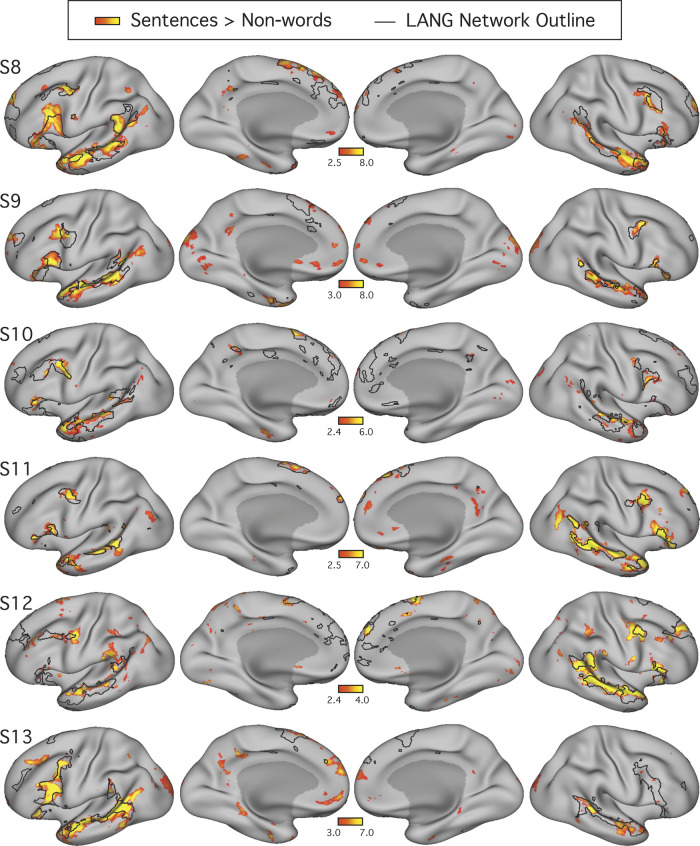Fig. 12.
Replication of close spatial correspondence between the language network and regions activated during a language task contrast. Analysis of the replication cohort (study 3) recapitulated the findings from the original cohort (studies 1 and 2; see Fig. 5). The language network (LANG) is shown in black outline and was defined using k-means clustering (Fig. 11). In all subjects (S8–S13), the language task activations fell largely within the boundaries of the intrinsically defined candidate language network. The detailed anatomy of the distributed intrinsic network corresponds closely with regions showing task-driven activation, including in smaller areas extending beyond the classical language zones (e.g., see S8 and S11), suggesting that the entire intrinsically organized network is functionally specialized. The overlap was not perfect, and in some cases hints of other networks can be seen (e.g., see S13), although these exceptions were not consistent across subjects. Unusually, in 2 subjects, S11 and S12, the task activation maps revealed larger regions in the right than in the left hemispheres. These subjects were also found to have unusually bilateral or slightly right-lateralized LANG networks when the relative size of regions in each hemisphere was later compared (Fig. 22).

